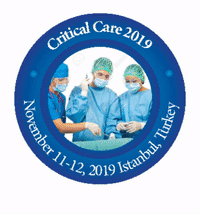Hetish M Reddy
SMS Medical College, India
Title: Our experience with pancreaticogastrostomy in comparison with pancreaticojejunostomy in Whipple procedure: A study of 50 cases
Biography
Biography: Hetish M Reddy
Abstract
Introduction & Aim: Pancreaticoduodenectomy (Whipple procedure) is the procedure of choice for tumors in and around the periampullary region. Th is major procedure consists of three important anastomoses, namely the hepaticojejunostomy, gastrojejunostomy and Pancreaticojejunostomy (PJ) or Pancreaticogastrostomy (PG). Our objective is to assess the outcome of PG in comparison with PJ in our center in terms of postoperative complications, duration of procedure, hospital stay and mortality. Methods: All the patients diagnosed with periampullary mass and found to be resect able were included in our study aft er obtaining due consent and randomly allocated into two groups for PG (Group-A) and PJ (Group-B). CT with pancreatic protocol was performed for all patients along with routine pre-operative workup. Demographic data, operative time and postoperative complications like Pancreatic Fistula (PF), duration of hospital stay and outcome were documented. All patients were followed up for minimum period of 90 days. Results: 25 patients in Group-A (17 males and 8 females) had a mean age of 52.6 years while 25 patients in Group-B (19 males and 6 females) had a mean age of 58.5 years. In Group-A, 4 patients (16%) and in Group-B, 6 patients (24%) developed PF which was confi rmed by drain fl uid analysis. Mean duration of hospital stay was 12.3 days in Group-A and 13.7 days in Group-B. Early mortality (during hospital stay) was much higher in Group-B (3 patients, 12%) than Group-A (1 patient, 4%) while there was no signifi cant diff erence in 90 day mortality. Mean operative time for Group-A was 5.4 hours and 5.3 hours for Group-B. Conclusion: Even though both PG and PJ are routinely done during Whipple procedure with almost similar outcomes in literature, in our study PG was found to be better than PJ in terms of overall post-op complications, duration of hospital stay and early mortality although there was no signifi cant diff erence in operative time and overall mortality

